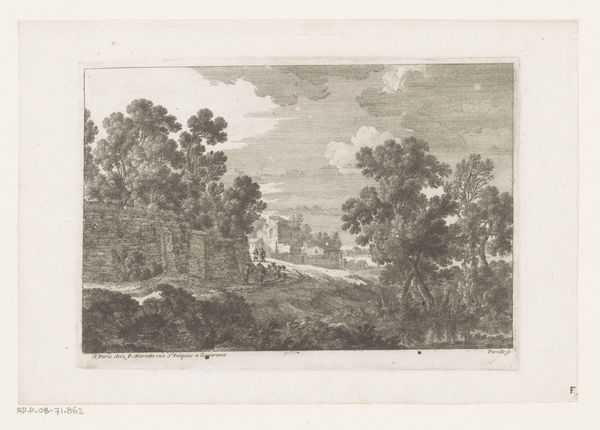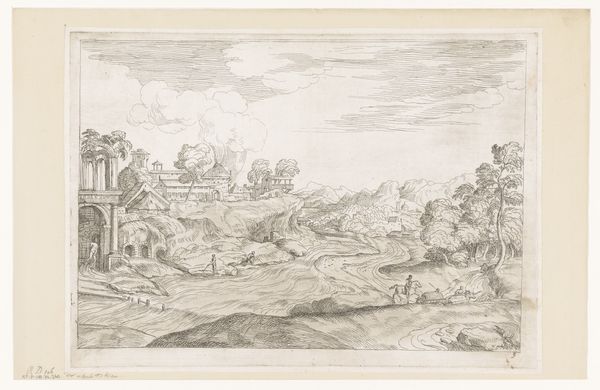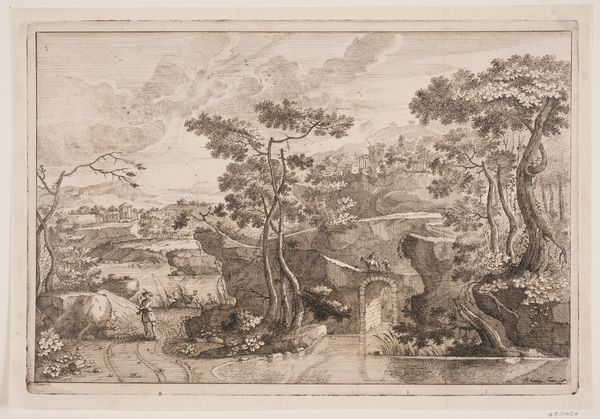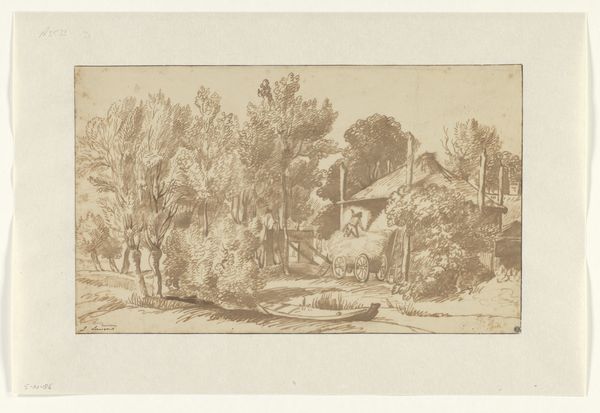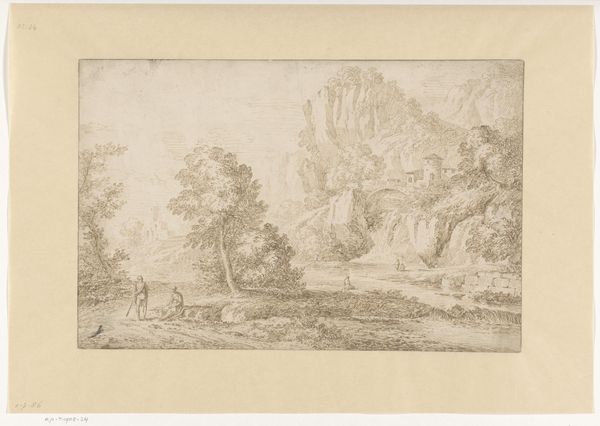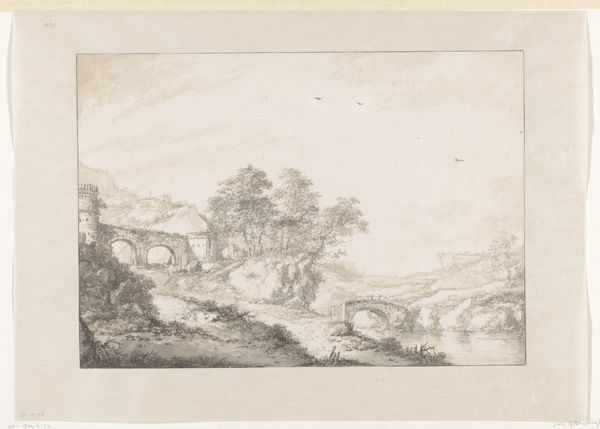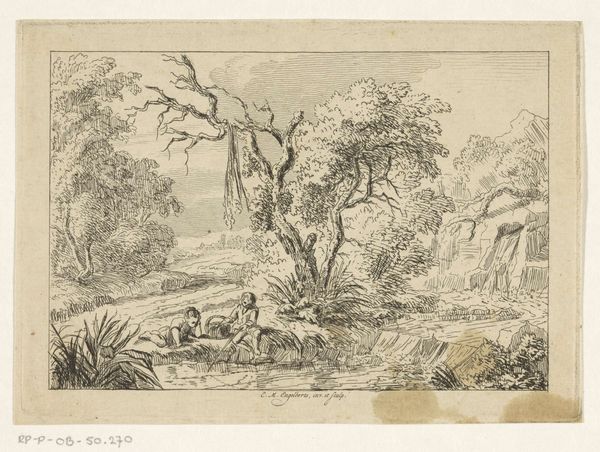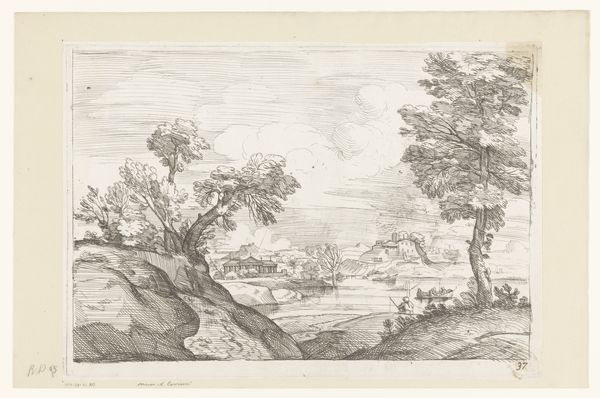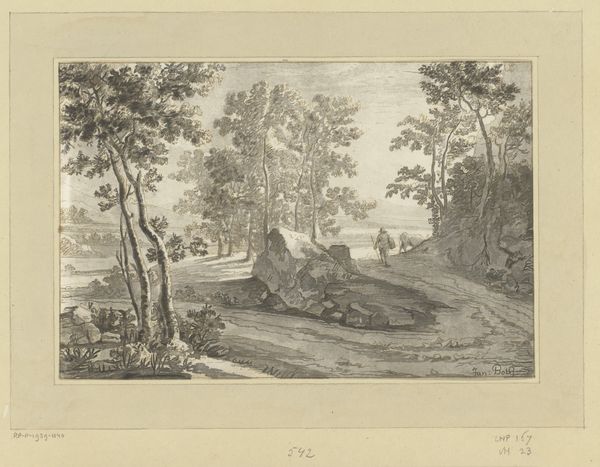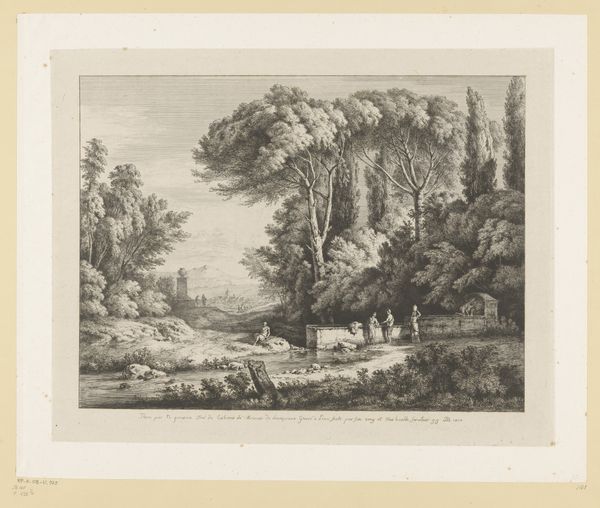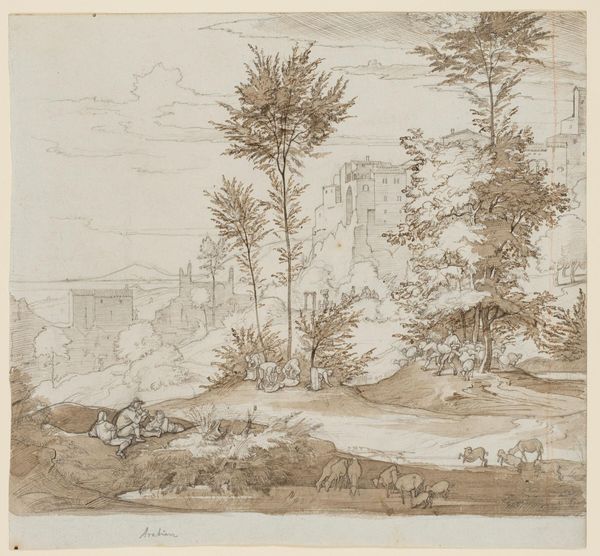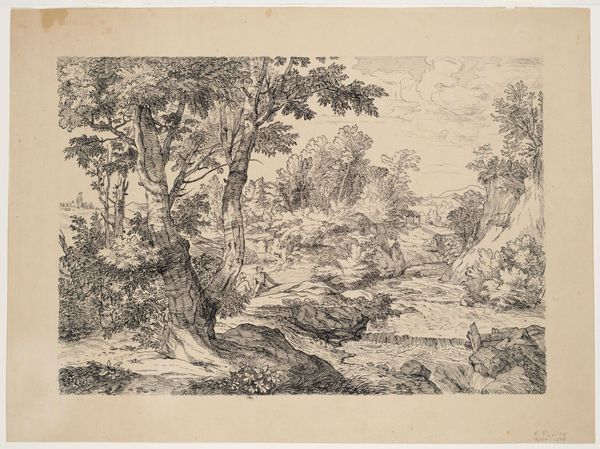
drawing, paper, ink, pen
#
drawing
#
landscape
#
classical-realism
#
etching
#
paper
#
ink
#
pen
#
history-painting
#
academic-art
#
italian-renaissance
Dimensions: 209 × 290 mm
Copyright: Public Domain
Curator: The Art Institute presents "Italianate Landscape with Buildings, Aqueduct," a pen and brown ink drawing with grey wash on paper, created circa 1774. Editor: There's a definite sense of peaceful ruin here. A man in the foreground walks along, but the rest feels timeless and almost uninhabited. I’m immediately struck by the delicate line work and soft grey tones. Curator: Right. The artist captures the grandeur of classical architecture in a state of decay, which was a popular theme for the Grand Tour travelers. We see that with the aqueduct, standing somewhat proud against the skyline. Editor: Absolutely, and it points to something deeper – the way power and infrastructure crumble over time. I notice that the figure walking is also rather diminutive against the sprawling backdrop, seemingly dwarfed. Curator: Good observation! This echoes a Romantic sensibility that emerged at the time, a contemplation of the sublime power of nature contrasted with the transience of human endeavor, including that of empires. There's almost an idealized vision of a harmonious relationship between humans and the land itself. Editor: I can't help but wonder for whom was the artwork created and how accessible would the image of these picturesque, idealized versions of the land and aqueducts have been to the broader public? Curator: Those are important questions to ask about any artwork. Though it is difficult to determine this artwork’s audience, Italian landscape drawings were highly collectible in the eighteenth century among the British aristocracy, where such imagery was widely circulated and collected. The art market in London and Italy fueled such interest and demand. Editor: What’s so captivating is the ambiguity. It’s lovely, yet melancholic. There's the promise of something monumental. It definitely highlights a tension that lingers in spaces marked by legacies of conquest, power, and imperialism. Curator: Indeed. Art can reveal both aesthetic appeal and underlying social dynamics, often sparking questions about the narratives and power structures embedded within cultural memory. Editor: Definitely. It's so essential to understand that these visions, while beautifully rendered, are never truly neutral or complete, as that incomplete representation of land becomes the thing that can hold a mirror to cultural perceptions and inequalities of that era and ours. Curator: That really adds a vital dimension to the experience of encountering art like this. Editor: Absolutely.
Comments
No comments
Be the first to comment and join the conversation on the ultimate creative platform.

